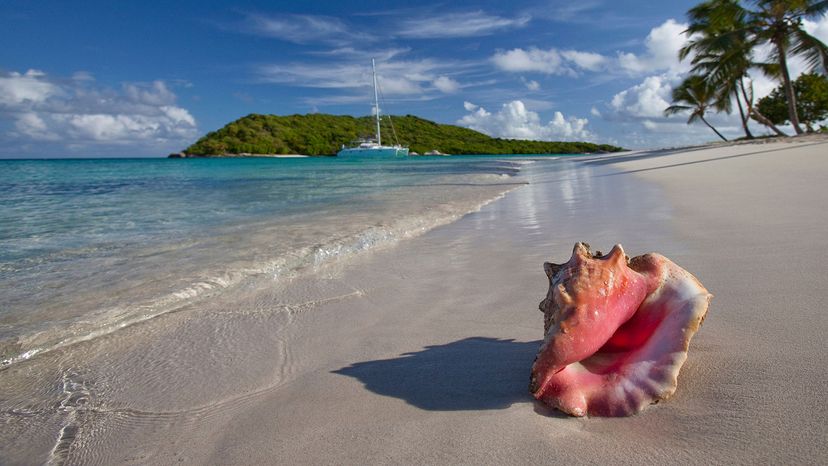Although there are a number of species, the most well-known is undoubtedly the Strombus gigas or ConchBrochure.pdf">queen conch (pronounced "konk.") It's commonly recognized by the trademark large, spiral-shaped shell, which is typically either pale pink or orange in the interior. Inside a living conch shell is a mollusk, or soft-bodied sea snail. Conchs get around by using a foot or horn to drag themselves along the seafloor.
The entire animal is extremely valuable. "The top of the shell is often cut off and used as a horn for signaling," emails Martha Davis, director of conch.org/">Community Conch, a nonprofit conservation organization working to preserve conch in the Bahamas. "Conch are prized not only for their shell but also for their meat. For centuries they have been used as a subsistence food throughout the Caribbean."
Shell collectors prize them as well for their beauty, adds Dr. Ana Carolina Peralta Brichtova, a professor at Universidad Simon Bolivar in Caracas, Venezuela. "Historically, Strombus gigas has been a highly prized species because indigenous pre-Columbian civilization used their meat for food, and the shells for ornaments, horns and trading."
Conch are native to such picturesque habitats as the Bahamas, Bermuda, the Florida Keys and the U.S. Virgin Islands, Jamaica and other Caribbean islands. Some species also live off the coast of South America and the Mediterranean. Conchs mate when a male and female are in proximity to each other, resulting in an egg mass of roughly 400,000 eggs, according to Davis. "The eggs hatch after about five days and then float on the currents for about three weeks until settling in a favorable habitat," Davis says. The queen conch, when allowed to really hit its stride, can live up to 40 years! Its development is slow, but steady, taking several years:
- Year 1: Conch bury themselves in the sand.
- Year 2: They emerge from the sand, but are extra vulnerable to predators, like turtles and sharks.
- Year 3: They have grown in length and developed a thick shell, which helps keep them safe from predators.
- Years 4 to 5: They achieve sexual maturity and can reproduce.
"This slow rate of maturing makes them vulnerable to fishers who think they are mature because they are big in length," Davis says. "Paper thin lips are a signal that the conch is not sexually mature." A fully mature adult conch sports a large shell festooned with spines. Its shell forms a thick flaring lip. That's the main way to distinguish between juvenile and grown conchs.



